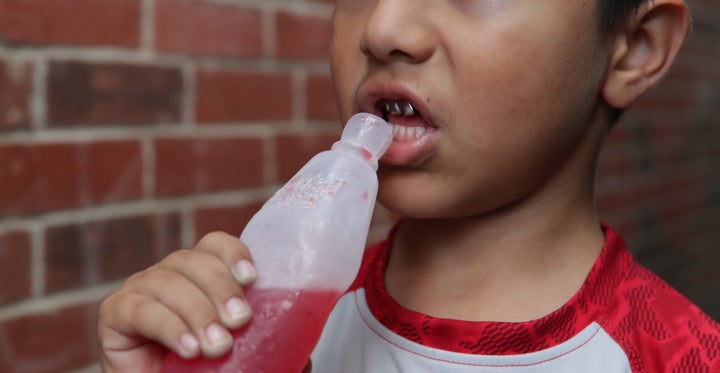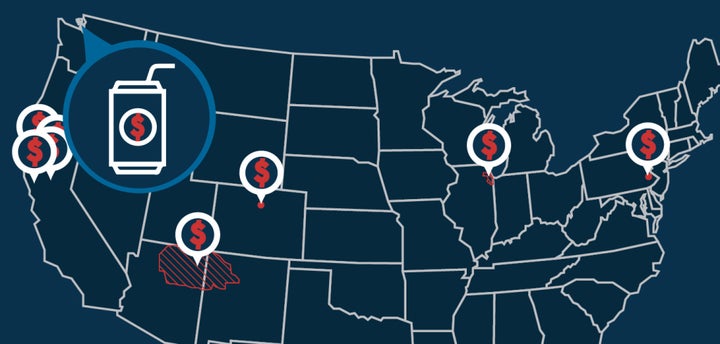
More than 2,000 Philadelphia children from low-income families are now able to attend pre-K centers, giving them the valuable opportunity to experience those benefits a year early.
In Berkeley, California, $13 per person per year is going into things like teaching residents how to eat a healthier diet.
These investments into the future are all being paid for by sugary drink taxes and represent only some of the progress being made in this effort.
Starting July 1, Boulder, Colorado; Oakland, California; and Cook County, Illinois, which includes Chicago, will join a list that also already includes Albany, California; and the Navajo Nation, which covers the corners of Arizona, New Mexico and Utah. San Francisco and Seattle have passed sugary drink taxes that will go into effect Jan. 1 to improve education, public health and other quality-of-life factors. So as of the start of 2018, more than 9 million Americans will live in communities where sugary drink taxes are reducing consumption of unhealthy beverages.

Click here for an interactive view of this map featuring sugary drink tax sites by location.
Faithful readers of this column know that this is a subject I’m passionate about. Last year, I dedicated a column to Philadelphia’s sugary drink tax, and another calling out the beverage industry, also known as Big Soda. I also wrote a column before the (successful!) votes on sugary drink taxes in Oakland, San Francisco and Albany, California.
I’m proud of the American Heart Association’s efforts in helping turn this into a coast-to-coast movement. I’m also grateful to the many other people and organizations who’ve made this a priority, especially former New York Mayor Michael Bloomberg and his team. We are committed to assisting the Partnership for Healthy Cities initiative, which seeks to advance the idea that when mayors and local leaders help their citizens live healthier and safer lives, cities become more prosperous, and which also has a particular focus on reducing sugary drink consumption.
The concept behind the sugary drink tax is simple. Since we know these products help fuel heart disease, obesity, diabetes other health crises, distributors must give back some profits for good use.
Berkeley became the first U.S. city to adopt such a plan in 2014. Recent as that is, it’s long enough for some quality analysis.
The short answer: It’s worked great.
A longer answer was published in April in the scientific journal PLOS Medicine. It includes the following details:
Sugary drink sales declined by 10 percent in the first year.
While this could indicate that buyers went outside the city limits for sugary drinks, more evidence points to a reduction in consumption. Water sales jumped 16 percent; fruit, vegetables and tea drinks rose 4 percent; and milk sales went up 1 percent.
Overall, the food and beverage industry continued growing in revenue and jobs. Sales tax revenue (outside the sugary drink tax) rose more than any other sector and jobs rose by 7.2 percent across all food industry establishments (restaurants, supermarkets and grocery stores).
“These findings confirm that sugary drink taxes make health and economic sense at a time when obesity and diabetes epidemics are sweeping the country, and when health care spending is threatened,” one of the study’s co-authors, Dr. Lynn Silver of the Public Health Institute, wrote in an opinion piece published this month in The Hill.
There’s another practical layer to this.
I interact with many nutrition experts. Whenever the conversation turns to diet, the line I hear time and again is, “Don’t drink your calories.” This logic makes sense for individuals, and for an entire city or county.
Or country.
In 2016, the United Kingdom followed Mexico in passing a national sugary drink tax. While the UK plan doesn’t go into effect until Jan. 1, it’s already paying dividends.
The UK tax is uniquely focused on amount of sugar in a product, as opposed to ounces, which further encourages drink makers to change their product content to cut down on the sweet stuff. While that may mean less revenue from the soda tax – a disappointment, perhaps, to the accountants – it represents an added benefit for public health. After all, tax receipts are secondary to the goal of good health through healthier beverage choices.
It’s exactly what the AHA and our partners in this fight are seeking.
Our aim is improving the health of all Americans, and we believe anything that leads to fewer sugary drinks being consumed is a step in the right direction. If that obstacle comes in the form of a tax that in turn benefits the community, that’s a great thing. Reformulated drinks would be, too.
